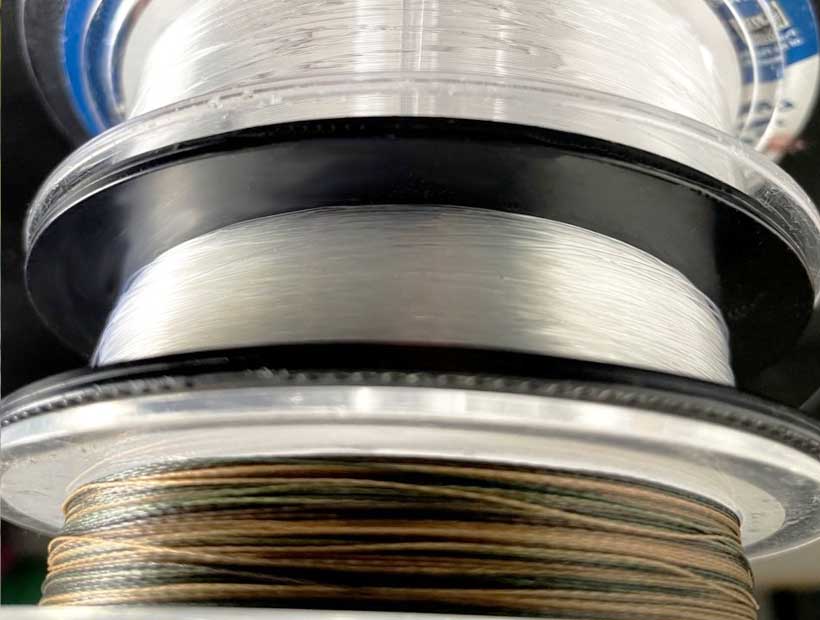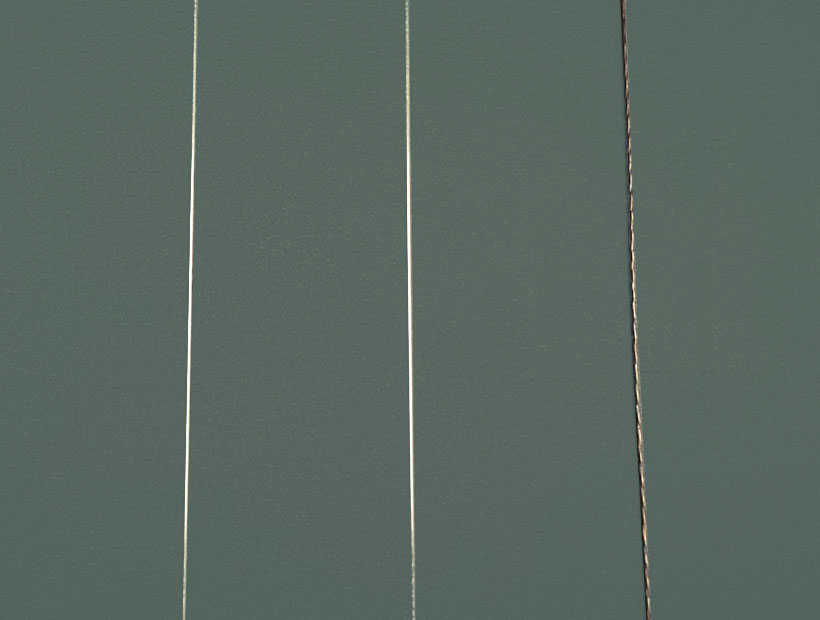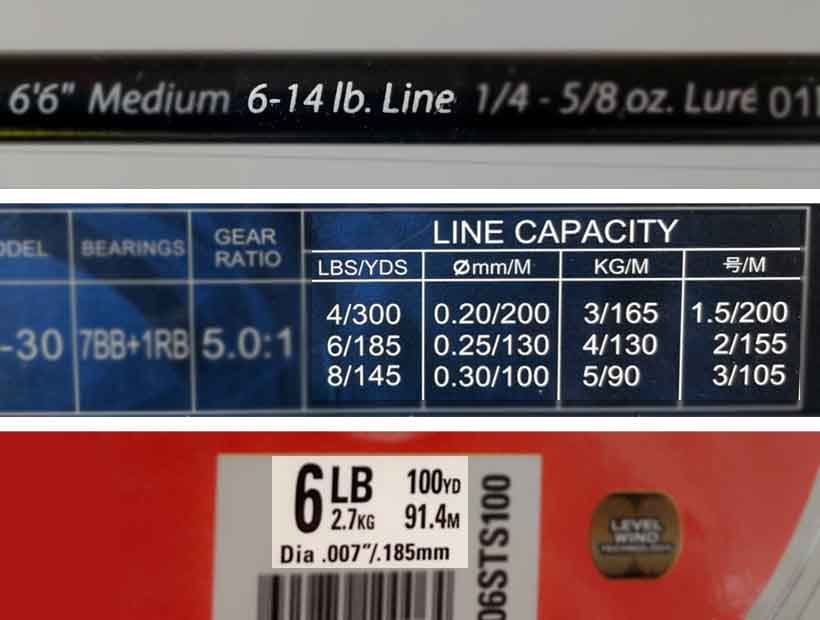Using the Right Fishing Line
There are three different types of fishing line you can choose from: mono (monofilament), fluoro (fluorocarbon,) and braid. There have been countless debates about which one is best but there truly is no straight answer. Each line offers multiple characteristics that will give you an edge in specific fishing situations. Monofilament can increase and manipulate the performance of different artificial baits. Fluorocarbon is preferred when fishing clear, deep waters. Lastly, braided line is the most durable when fishing in and around heavy cover (lily pads, weeds, fallen trees and branches, etc.).

You will come across many anglers who recommend a combination of all three fishing lines. You’ll hear something like: "start with a few feet of monofilament “backing” on your reel, then connect it to a braided line with a uni-uni knot - this will be your main line, and finally end off with adding either a fluoro or monofilament “leader line” with a uni-uni knot." This is absolutely great advice and pretty much the standard for serious, experienced anglers. However, this set-up is far too advanced and unnecessary for those just starting out. Right now, all you need to do is keep things simple, catch as many fish as you can, and build up your fishing awareness.
Getting Started With Monofilament
Starting off with a monofilament fishing line is your best option. It's substantially cheaper and can be used in pretty much every fishing situation. Most importantly, it does exactly what you need it to do - catch fish. Compared to fluoro and braid, mono wears down quicker. However, you can use this to your advantage. Since mono is inexpensive and has a shorter lifespan, you’ll have more chances to get familiar with recognizing where your line is weak and when it needs to be replaced. You’ll also have more opportunities to try different brands of fishing line while spending less. The more brands of line you try, the easier it will be for you to tune into the feeling of a fishing line’s performance.
This will go a long way in your ability to recognize and understand the benefits of using and combining different types of fishing line. It’s hard to fully grasp these benefits until you have a good amount of fishing experience, used a variety of artificial baits, and have finely-tuned fishing skills. In the meantime, keep it simple and focus on catching as many fish with monofilament fishing line as you can. Once you feel you’re progressing, switch to a fluoro or braid line and observe the differences between the three.

Left to right: monofilament, fluorocarbon, and braided fishing lines
Braided Line and Minnows
If you decide to start fishing with minnows, you can use braided fishing line. This line is almost impossible for a tooth-filled fish to cut, which is likely what your minnow will attract. If you decide to use this line, make sure you get a bait and tackle clerk to spool it on your reel for you. Do not tie braided line directly to your fishing reel like mono or fluoro as it's extremely slippery and will cause issues when retrieving bait and reeling in fish. Using minnows doesn’t mean you have to use braided line nor does it mean you will definitely attract tooth filled fish. The possibility is higher however, depending on the species of fish in the area you're fishing. Before you start using minnows, be sure you’re comfortable handling your catch safely or you could be taking a trip to the hospital for some stitches.
Fishing Line Size
Picking the size of the line you’re going to be fishing with is very simple. Take a look at your rod and reel’s line preference and grab a line that matches it. The weight and amount of line will be right on the box and spool of the line. Even though you’re just starting out, be mindful of the size and species of fish you're catching or targeting. This is so you can fine tune your line appropriately as you go along. Personally, I prefer the lightest line I can get away with for a couple of reasons:
∙ I like to keep a low profile.
∙ The lighter the line, the harder it is for the fish to detect.
∙ My artificial baits will perform and look more natural.
∙ I can fit more line on my spool.
∙ It makes fighting a fish more fun and challenging.

Top to bottom: line preferences printed on a rod, on a reel box, spool of fishing line
That's just my preference when it comes to fishing for fun. When I’m tournament fishing, it’s another story. Regardless, you’ll figure out your preference and fishing style as time goes on.
Fishing Line Recommendations
Nowadays, all of the fishing line brands that have been around for decades are at the top of their game. No matter which brand you choose, you really can’t go wrong. The only way to know the best fishing line for you is to grab one and start fishing with it. The more you fish and try different lines, the more you will know which brand you prefer. Here is a list of the top name brands that have been proven and tested in no particular order. I’ve used them all and they’re all pretty good. Pick one, try it out, and get a feel for how it performs.
1. Berkley Trilene XL Smooth casting
2. Stren High Impact
3. Sufix Tritanium Plus
4. SpiderWire EZ MONO
5. South Bend Monofilament
